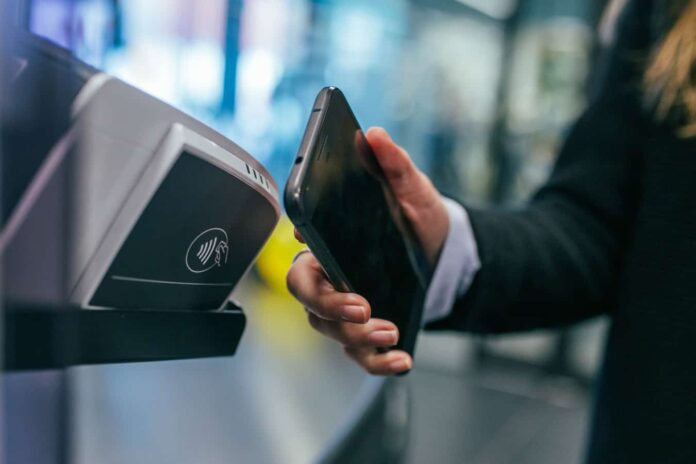[ad_1]
Digital wallets and online payment systems are now massively popular with smart-phone users. They’re dangerously convenient and easy to use as well as being highly-secure. One of the leading systems is of course Google Pay. Main competitor to Apple Pay, GP is the primary payment platform on all Android devices.
Despite the increased prevalence of digital wallet use, there are plenty of late adopters who aren’t all that clued up on how these platforms work. If you’re one of these cautious souls, then this article is for you. What better way to make an introduction than by focusing on one of the biggest players in the business. So what is Google Play specifically and where did it all begin?
What is Google Pay?
Technically-speaking Google Pay is a digital wallet and online payment system. It allows you to store payment cards and your bank account details in one place. The idea is to make it easy to make purchases both online and in-store.
A Brief History
The history of Google Pay can be traced back to 2011 when the Big G introduced Google Wallet – a similar kind of mobile payment system that allowed users to store credit card info and make purchases with their smart-phones.
Unfortunately, it didn’t really catch on and was replaced by Android Pay in 2015. Three years later and Google merged Android Pay with Google Wallet to create Google Pay. Significantly, the availability of the new payment platform was expanded beyond Android to include iOS devices as well as desktop web browsers.
Using Google Pay for In-Store Purchases
One of the most popular ways to use Google Pay is to make in-store purchases. Both Google Pay and competitor, Apple Pay, use Near Field Communication (NFC). This technology enables you to make in-store purchases with a mobile device.
To use the service you download the Google Pay app, enter your phone number and sign into your Google account. It’s then a case of following some simple verification steps and adding your bank account details.
Once complete, you’re pretty much ready to go. The payment process itself is quick and secure and your information is never shared with the merchant during the transaction.
Another advantage is that shoppers don’t need to carry physical cash or cards. What’s more the pandemic accelerated the adoption of contactless payment methods, given that people have become more conscious of touching surfaces and handling physical cash.
Using Google Pay to Make Online Purchases
Google Pay is especially popular on the web with an ever-increasing number of people using it to make online shopping transactions.
Inroads are also being made in industries that have traditionally been dominated by specialist payment platforms. The iGaming sector is a typical example.
This is some going considering the existence of already well established services such as Neteller, Zimpler and Skrill.
Another apparent hurdle is that many online casinos offer direct pay-by-phone services – a very convenient, easy-to-use option that merely requires a phone number. In this respect, it seems that a lot of punters don’t like these sorts of transactions appearing on their phone bill. Thus Google Play is a good alternative.
Google Pay – Pros and Cons
Like any product, Google Pay isn’t infallible. It has its advantages and drawbacks. With this in mind, here are its main pros and cons.
Pros
Convenience
There’s no doubting the convenience of digital wallets such as Google Pay. It’s easy (you might say too easy) to make payments without carrying cash or a physical card.
Security
A bugbear for the uninformed, security is actually rock-solid for Google Pay as is the case with all of the big-brand digital wallets. It uses several layers of security to protect user information, including encryption and tokenization. Thus, the risk of fraud is minimal.
Loyalty Rewards
Google Pay offers rewards for users who complete qualifying actions such as referring friends, making purchases and sending money.
Peer-to-Peer Transactions
Like services such as Monzo, GP allows users to send money to other people quickly and easily. This feature is especially useful for splitting bills or paying back friends and family members.
Compatibility
Google Pay is compatible with a wide range of devices. As mentioned, the app was made available to ioS devices in 2018 which has become a huge selling point for many users. It’s also compatible with an assortment of popular banks and financial institutions, making it easy to link accounts and make payments.
Cons
Limited Coverage
Not all merchants accept Google Pay, so you may not be able to use it everywhere you shop.
Transaction Limits
Transaction limits are also applied which may restrict the amount of money you can send or receive in a single transaction or over a certain period.
Transaction Fees
While Google Pay itself is free to use, some merchants may charge fees for accepting payments via the service.
Dependence on Technology
Google Pay requires a smartphone or other compatible device with internet access. So if your phone or internet connection is down, you may not be able to use the service.
Privacy Concerns
Although Google Pay does not sell user data to advertisers or other third parties, it does collect some information about your transactions and usage patterns
[ad_2]
Source link
